Error E09 on a Siemens dishwasher
 Users may never even notice most errors in dishwashers during the entire time they use the “home assistant.” This is due to the fact that there are too many errors, so usually new fault codes first cause confusion. For example, error E09, which appears in a situation where there is no water heating. This can happen due to failure of the water heating element, damage to the thermistor, or problems with the relay of the PMM control module. Let's figure out how to find and correct the situation without calling a service center specialist.
Users may never even notice most errors in dishwashers during the entire time they use the “home assistant.” This is due to the fact that there are too many errors, so usually new fault codes first cause confusion. For example, error E09, which appears in a situation where there is no water heating. This can happen due to failure of the water heating element, damage to the thermistor, or problems with the relay of the PMM control module. Let's figure out how to find and correct the situation without calling a service center specialist.
Why did this code appear?
The informative error code E09 in a Siemens dishwasher informs the user that there is a problem with the heating element, thermistor or control board. Each of these nodes is, to one degree or another, responsible for heating the water in the dishwasher.
- The water heating element is directly related to heating, because this tubular element is installed in order to heat the water entering the chamber. If the heating element burns out during operation, the water will always be cold. It is possible to test the heating element with a conventional multimeter.
- The thermistor in a Siemens dishwasher is responsible for measuring the water temperature. If the node is faulty, it will either transmit incorrect data to the PMM control board, or will not transmit information at all. Under such conditions, the machine will not be able to heat the water to the level selected by the user for a specific operating cycle.

- The dishwasher control board is responsible for the operation of all components of the device.That is why, if this element is damaged, the system fails and simply stops receiving signals from the “brain”.
These are the main elements that can cause error E09. It is also worth listing secondary factors that can also influence the lack of heating. Sometimes the entire operation of the system is undermined because of these “little things”.
- Incorrect connection of the “home assistant” to all communications.
- Severely clogged PMM garbage filter.
- Incorrect settings for the duty cycle.
- Damage to the pressure sensor.
If the problem arose immediately after you purchased a brand new Siemens dishwasher, then the reason may lie in an incorrect connection to the communications. In this case, reconnecting the machine to the sewer will help reset the error code.
Check that the drain hose is connected correctly - you must make two bends, one of which should be at the bottom, at the very base of the machine, and the other right next to the siphon. This is the only way to avoid the “siphon effect”, when the waste liquid, instead of going down the drain, goes back into the Siemens dishwasher.
If the drain hose is not connected correctly, the water will not flow properly through the dishwasher. This is also why the temperature of the water in the washing chamber will always be slightly different from the one set by the user. In rare cases, this will cause the water to remain cold.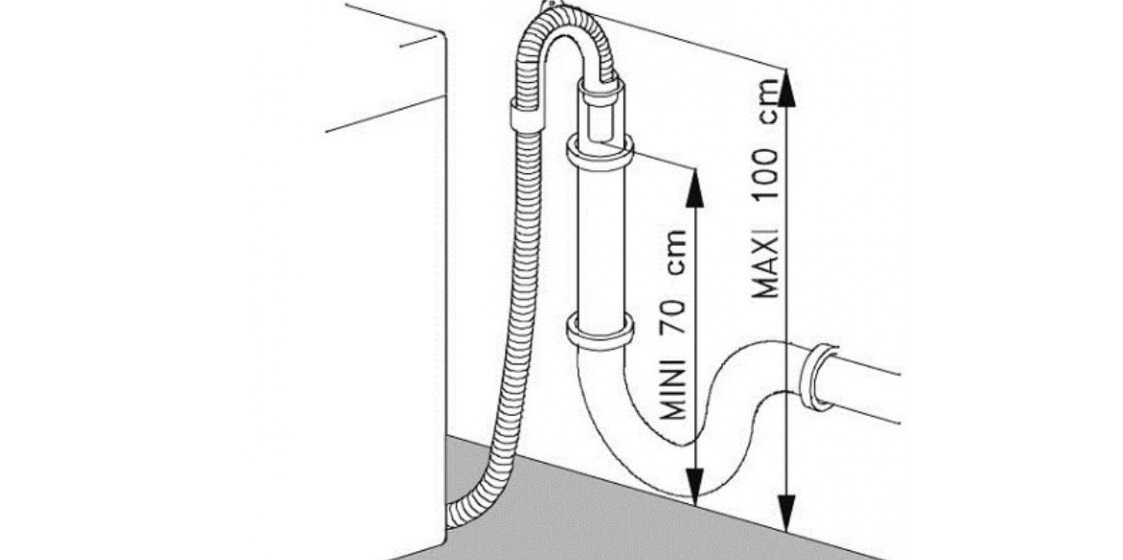
What to do in such a situation? The solution is simple - you need to reconnect the drainage hose to ensure high-quality fluid circulation in the PMM. This can be done in less than half an hour, but first you need to remember to disconnect the equipment from the power supply and water supply.
If the cause of error E09 is not in the drain hose, then you need to check the unit's garbage filter. Its connection with water heating is not so obvious, but it exists. The fact is that the liquid inside the washing chamber must constantly circulate unhindered, while the heating element maintains its temperature so that the water cleans dirty dishes well. If the filter element is clogged with various debris, then the circulation of water will seriously slow down.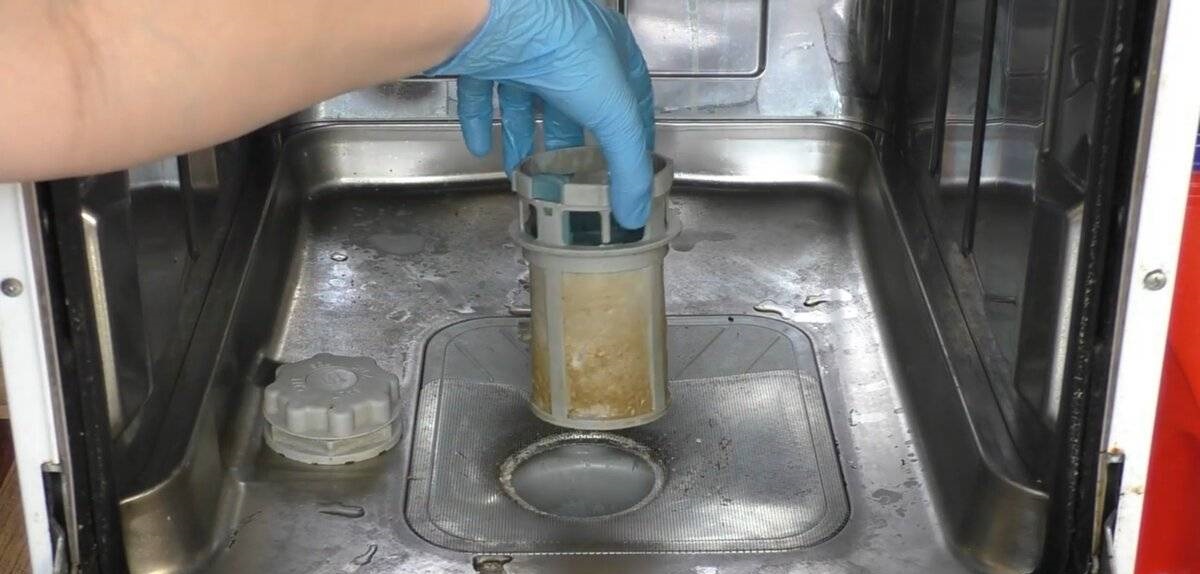
Because of this, water will begin to accumulate in the bunker, stopping returning to a special reservoir. This is why the Siemens dishwasher will be forced to draw in liquid again and again, and the water heating element will not have time to heat the incoming liquid.
To test this theory, just carefully observe the progress of the wash. Look into the working chamber directly during the working cycle - liquid should not accumulate, so if it begins to linger at the bottom of the chamber, then you need to remove the blockage in the debris filter. So, with the help of simple manipulation, you can return normal circulation and heating of water.
The garbage filter can be easily cleaned of contaminants using a citric acid solution, in which the element must be soaked for several hours.
If the first two options for the problem have nothing to do with it, then it’s worth checking the pressure sensor of the Siemens dishwasher. It is he who is responsible for controlling and ensuring the circulation of water in the system, so if it fails, problems with the liquid may arise. In this case, the machine will drain the liquid and then refill with cold water, which the heating element will not have time to heat. If this happens to your “home assistant,” you will have to replace the sensor with a new one, because repairing a damaged part is impractical, unless the problem is in the contacts, which can simply be cleaned.
Checking the temperature sensor
Another common reason for error E09 is the temperature sensor, which often fails in Siemens dishwashers. You can test the temperature sensor yourself. What to do to make this happen?
- Prepare the necessary tools (Phillips and slotted screwdrivers, pliers and a multimeter).
- Disconnect the machine from all communications.
- Remove all dish baskets from the washing compartment.
- Remove the sprinkler arm that is installed at the bottom of the hopper.
- Take out the garbage filter along with the small mesh installed underneath it.
- Unscrew the two fasteners hidden under the mesh.
- Place the “home assistant” on the floor, and then remove the side fasteners.
- Disconnect the drain pipe from the circulation block in which the heating element is installed.
- Locate the thermostat located near the heating block.
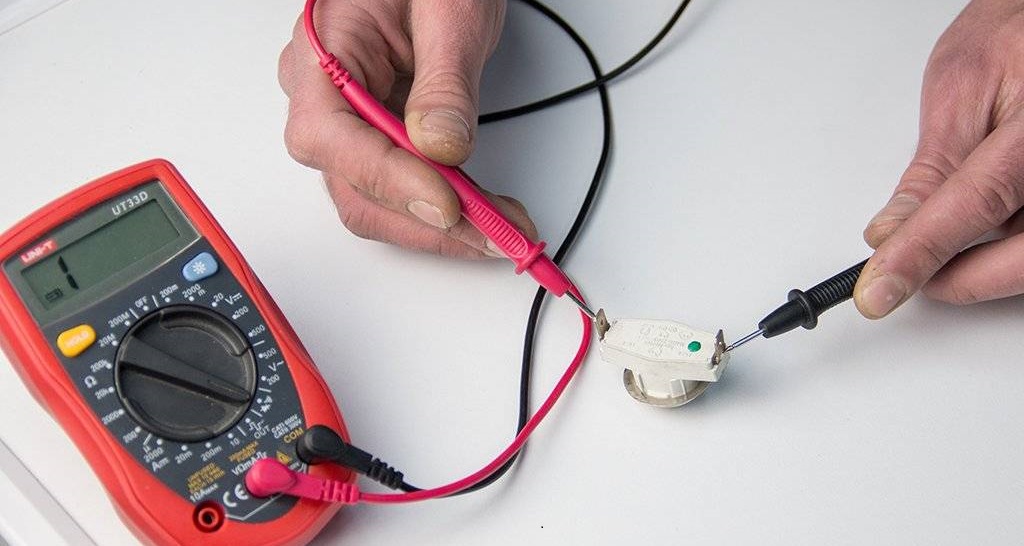
- Disconnect all wires from the temperature sensor.
Be sure to take a photo of the correct wiring connection so you don’t get confused later during reassembly.
- Carefully clean the thermostat contacts, and then measure the resistance with a multimeter.
- If the unit is faulty, remove the damaged part and install a new temperature sensor in its place.
In rare situations, error E09 turns out to be caused not by the thermostat itself, but by its wiring. Therefore, along with the part, it is worth checking all the wires that could have burned out during the active operation of the PMM. Also carefully examine the wiring insulation before moving on to the next check point.
Damaged control board
Another error code often occurs due to a problem with the control module of the Siemens dishwasher. Usually the reason is hidden not in the entire module, but in the relay of the water heating element, which is located on the unit.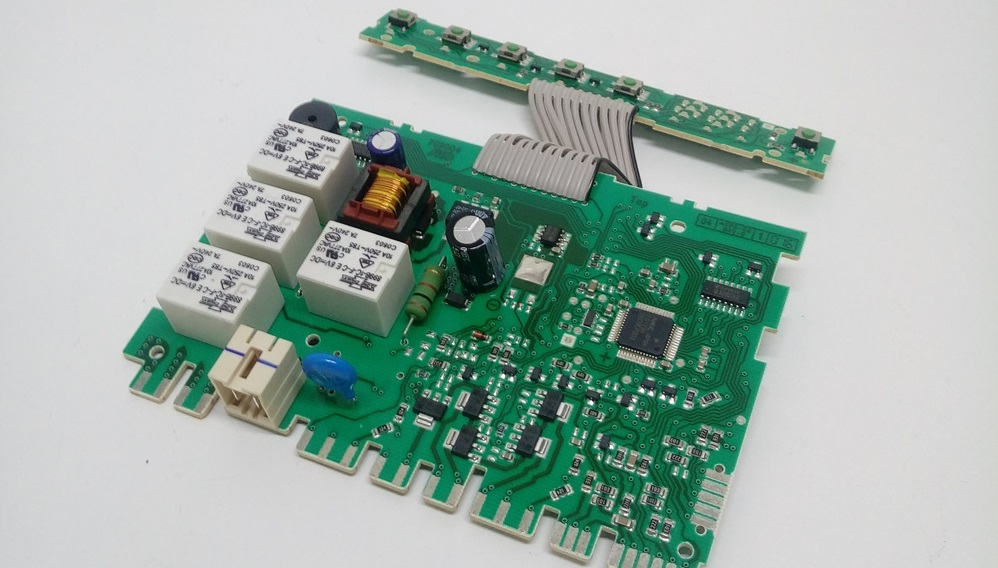
It is not recommended to carry out repair work on the board, since it is too complex an element that is much easier to damage even more than to repair it yourself. At home, you can only carefully inspect the control board, trying to find damage visible to the naked eye, in order to know for sure that the problem is in the electronic unit. If there are visible defects, then call a technician to repair the complex board.
The heating element needs to be checked and replaced
In Russia, one of the most common reasons for the failure of heating elements of household appliances is poor-quality hard water from the water supply. If you do not use special filtering devices and liquid softeners, then over time the heating element will fail due to a thick layer of scale.
Do not attempt to partially disassemble the appliance in order to replace a burnt-out heating element if the “home assistant” is still under warranty - this action will void the warranty and you will be denied free repairs.
When your Siemens dishwasher is no longer under warranty, you can check the water heating element yourself and replace it if it has burned out due to scale. To do this, you need to get to the housing of the circulation pump, in which the heating element is located. The unit must be carefully disassembled, get to the water heating element and check its resistance, which should be in the range of 21-22 Ohms. How to partially disassemble the machine to gain free access to the unit?
- Disconnect the device from the water supply and electrical network.
- Open the dishwasher door.
- Remove all dish baskets to keep them out of the way while checking.
- Remove the spray arm.
- Remove the debris filter from the bottom of the washer chamber, and then remove any remaining water from the empty hole to avoid accidentally flooding the floors.
- Place the machine on its side.
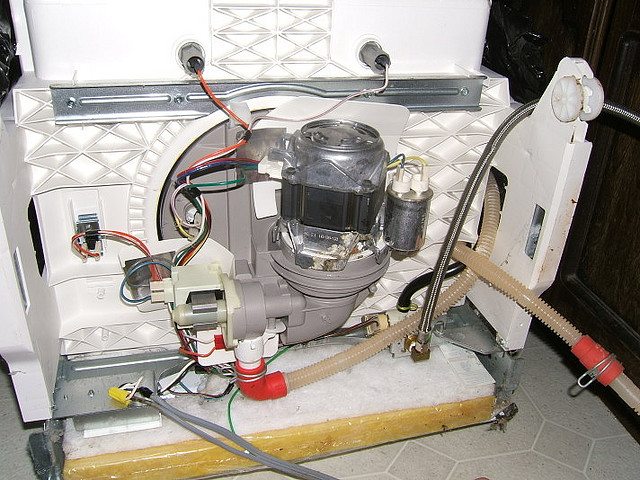
- Remove the bottom and side walls, first removing the fasteners to provide free access to the pump located at the bottom of the machine.
- Disconnect the wiring from the circulation pump and remove the assembly.

- Disassemble the pump and find the heating element inside.
- Disconnect all wires and carefully remove the part for further inspection.
Now all that remains is to test the node using a multimeter. If the resistance values differ from the norm, then you need to buy a new heating element and install it in place of the old one. To purchase a suitable part, you should take an old water heating element to the store as an example.
If a temperature sensor, heating element, pump or other relatively inexpensive component fails, then repair will definitely be a logical solution. If the PMM control board is damaged, then restoring it may cost even more than buying a completely new Siemens dishwasher, so in this case it is better to evaluate the feasibility of repairs in advance.
Interesting:
Reader comments
- Share your opinion - leave a comment

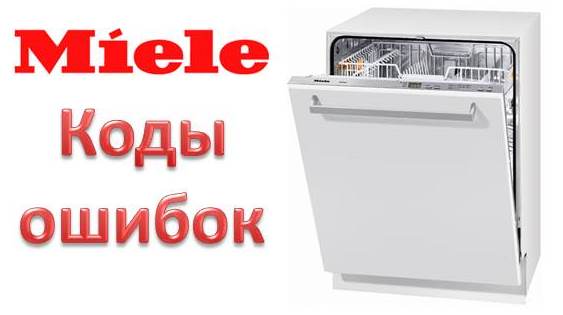
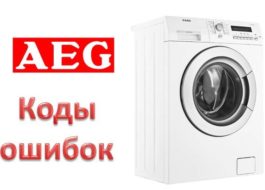

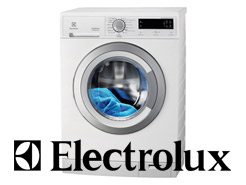
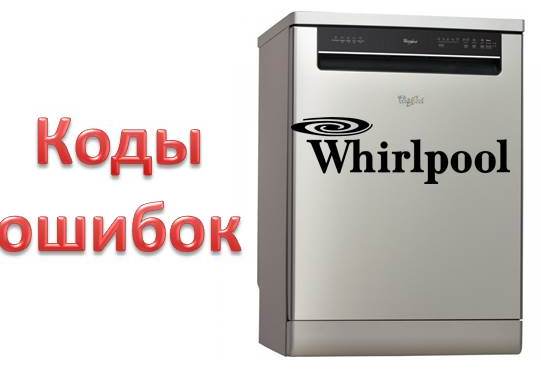
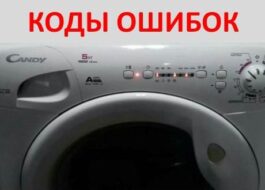














Add a comment